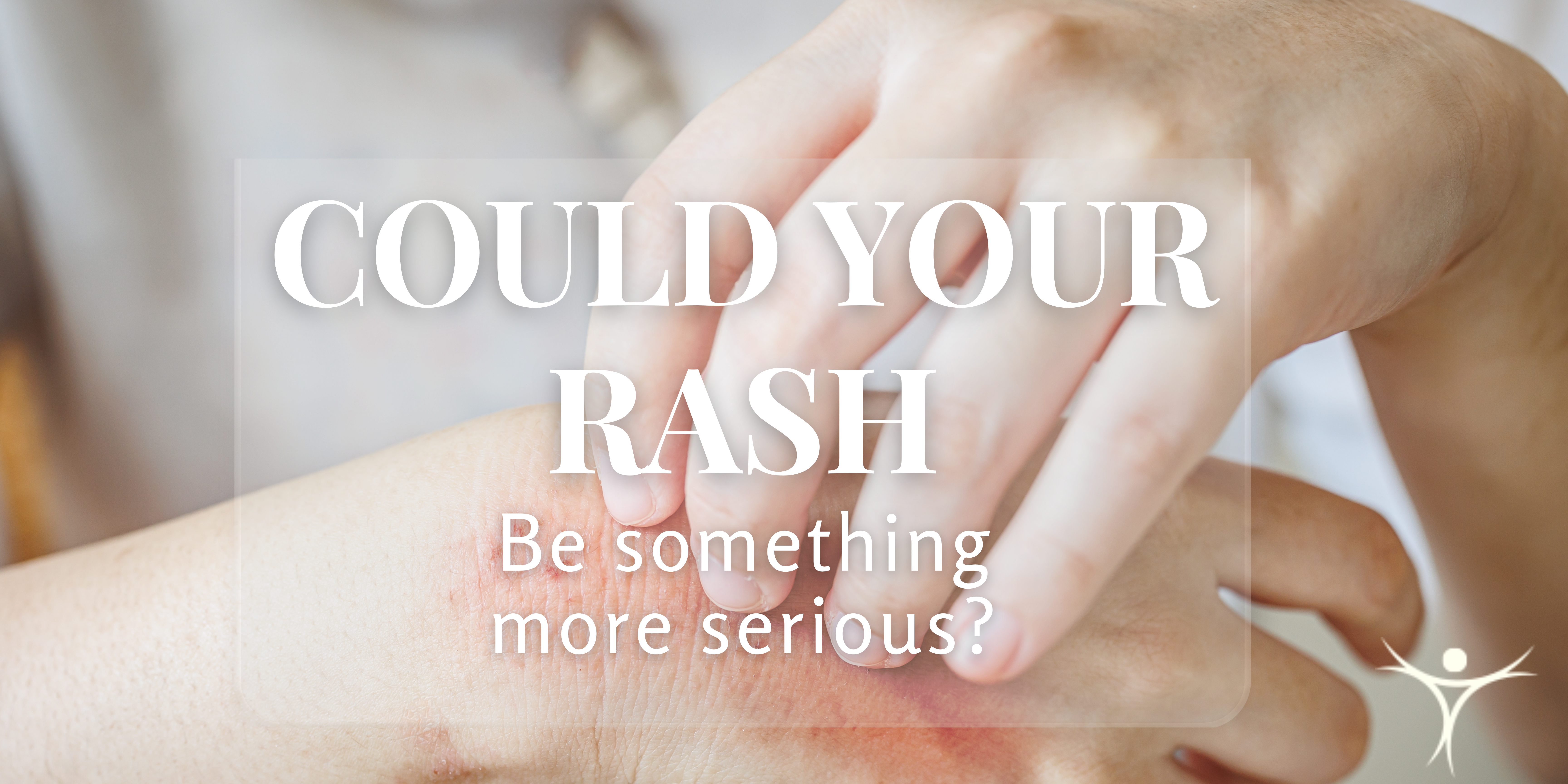An itchy, red rash can be more than just a minor irritation—it might be a sign of an underlying health condition. While some rashes are caused by simple skin irritations, others can indicate autoimmune diseases, severe allergic reactions, or infections that require prompt medical attention. So, how do you know if your rash is something more serious?
Common Causes of Itchy, Red Rashes
Several conditions can present with similar symptoms, but require different treatments. Here are some of the most common skin conditions that may cause persistent itching and irritation:
1. Contact Dermatitis (Allergic or Irritant Reaction)
- What It Looks Like: Red, inflamed skin with blisters or dry patches, often in areas exposed to irritants (such as soaps, detergents, or plants like poison ivy).
- What Causes It: Contact with an allergen or irritant triggers an inflammatory reaction in the skin.
- Key Signs: It’s not contagious and usually improves once the irritant is removed.
2. Eczema (Atopic Dermatitis)
- What It Looks Like: Dry, scaly, and intensely itchy skin that may crack and bleed. Often appears in patches on the hands, face, or behind the knees.
- What Causes It: A chronic inflammatory skin condition linked to genetics, allergies, and environmental triggers.
- Key Signs: It tends to flare with stress, weather changes, or allergens.
3. Psoriasis
- What It Looks Like: Thick, red plaques with silvery scales, commonly on the elbows, knees, and scalp.
- What Causes It: An immune system response that speeds up skin cell turnover, leading to excessive scaling and inflammation.
- Key Signs: It’s occasionally associated with joint pain (psoriatic arthritis) and is typically mild to moderately itchy in areas affected
4. Fungal Infections (Ringworm, Tinea Infections)
- What It Looks Like: Red, circular, scaly patches that may itch or burn. Often found on the feet (athlete’s foot), groin (jock itch), or body (ringworm).
- What Causes It: Fungal overgrowth on the skin, often spread through contact with infected surfaces or people.
- Key Signs: It spreads slowly and is usually localized to one or a few areas.
5. Autoimmune Skin Conditions (Lupus, Dermatomyositis)
- What It Looks Like: A butterfly-shaped rash across the cheeks and nose (Lupus) or a purplish rash on the eyelids and knuckles (Dermatomyositis).
- What Causes It: The immune system mistakenly attacks healthy skin cells.
- Key Signs: These rashes may be accompanied by fatigue, joint pain, or muscle weakness—signs of an underlying systemic condition.
6. Bacterial or Viral Infections (Impetigo, Shingles, Cellulitis)
- What It Looks Like:
- Impetigo: Honey-colored crusts, commonly around the nose and mouth.
- Shingles: A painful, blistering rash along a nerve pathway, often on one side of the body.
- Cellulitis: Red, swollen skin that feels warm and tender to the touch.
- What Causes It: Bacterial or viral infections affecting the skin.
- Key Signs: Unlike allergic or inflammatory conditions, these infections may cause pain, fever, or swelling and often require antibiotics or antiviral medications.

When to See a Dermatologist
Understanding the differences between skin conditions can help you take the right steps toward relief and healing. If you’re unsure about your symptoms, a dermatology medical professional can offer expert guidance to ensure you receive the best care.

